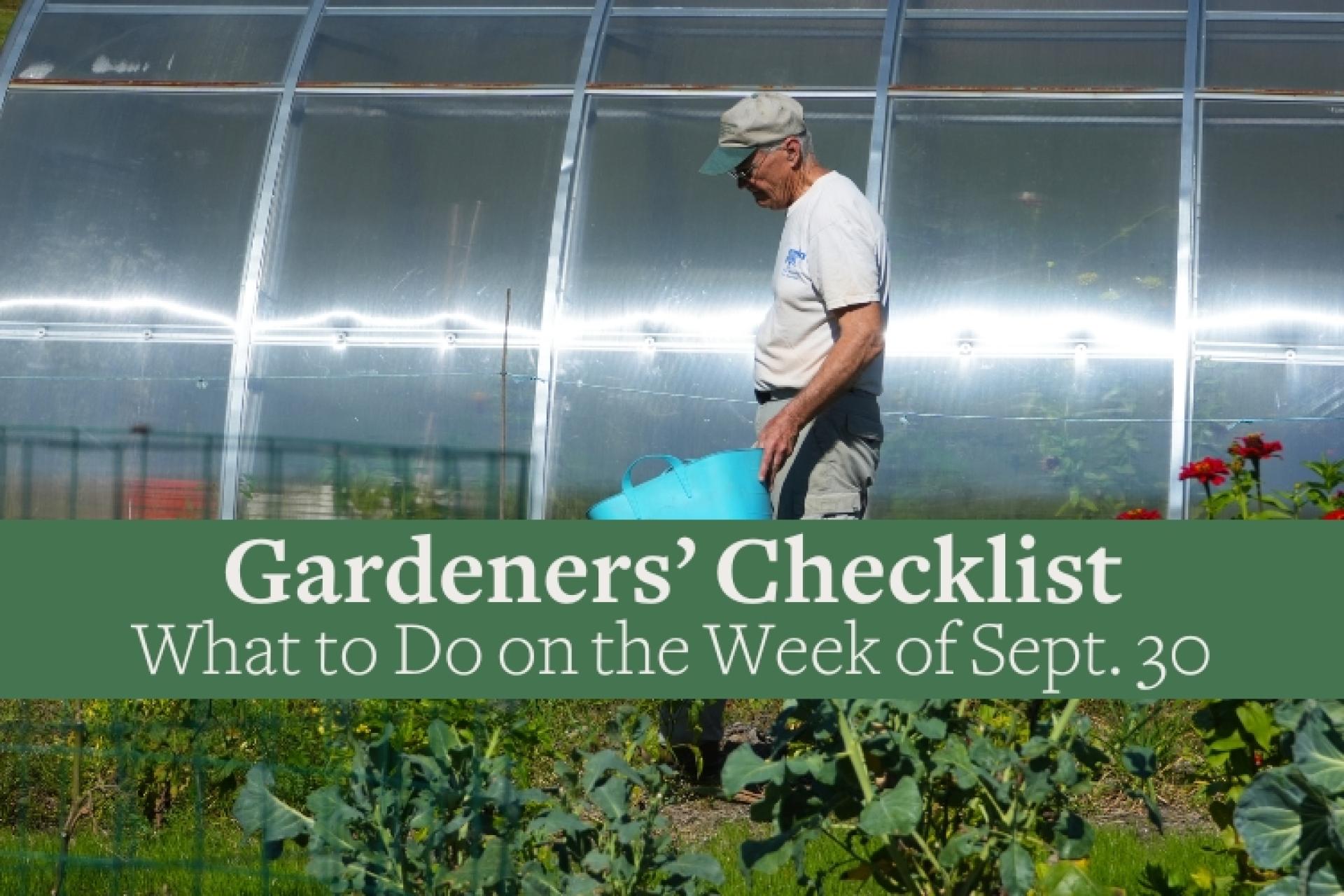You are here
Gardeners Checklist: Here Is What to Do on the Week of Sept. 30
Gardeners Checklist: Here Is What to Do on the Week of Sept. 30
By Ron Kujawski
* Buy some perennial asters to plant in areas of the flower garden that are currently colorless. Garden centers are well-stocked with these sun-loving, fall blooming perennials. Asters are very reliable plants, meaning that they are easy to grow with few pests or diseases.
* Add spider plant, peace lily (Spathiphyllum), Chinese evergreen (Aglaonema), weeping fig (Ficus benjamina), philodendron, and golden pothos to your houseplant collection. These plants are especially good at removing pollutants such as benzene and formaldehyde from indoor air.
* Inventory garden tools and see what needs to be repaired or replaced. This is a good time to shop for replacement tools since sales typically abound in early fall.
* Sort through garlic bulbs harvested earlier in summer and pick out some of the largest ones. When it comes to garlic, size matters. Keep the bulbs intact until ready to plant later this month. Separate the individual cloves just before planting. Garlic likes well-drained soils. If soils are heavy (high clay content), mound soil into raised planting beds.
* Remove all weeds from the vegetable garden. “Hey Bub! Why bother? They’ll all die with a few hard freezes.” First of all, my name is not Bub. Secondly, many pests and diseases of vegetable crops carry over through winter on these weeds. Unless weeds are removed, the pests and diseases will be there next spring ready to invade vegetable seedlings.
* Relieve compacted soils on heavily used areas of the lawn. The best way to do this is with a machine called a core aerator. Core aerators pull up plugs of soil from the lawn and create holes that allow for air, water, and nutrients to reach grass roots. Core aerators can be rented at some hardware and building supply stores or from equipment rental firms.
*
“What’s with all the premature leaf drop?” That’s been a frequently asked question of late. Are trees in jeopardy of losing all their leaves before we get to enjoy the full blast of colorful fall foliage? I doubt it. Yes, many leaves have fallen, and if you examine these, you’ll see that almost all have spots or blights. These are symptoms of infectious diseases. (There’s no need to see your doctor. These are plant diseases, and unless you wear nothing but fig leaves, you’re safe.) Most leaf disease infections actually occurred in spring when leaves were still developing. Disease development and spread were aided by the wet weather of June and July. Diseased tree leaves do not linger. They fall, hence, this premature leaf drop. Nevertheless, as I stare out my window, I see plenty of leaves on most of the trees in the landscape. We will have enough colorful fall foliage to keep leaf peepers peeping.
Ron Kujawski began gardening at an early age on his family's onion farm in upstate New York. Although now retired, he spent most of his career teaching at the UMass Extension Service. He serves on Berkshire Botanical Garden’s Horticulture Advisory Committee. His book, Week-by-Week Vegetable Gardener’s Handbook, is available here.
Help Our Garden Grow!
Your donation helps us to educate and inspire visitors of all ages on the art and science of gardening and the preservation of our environment.
All Donations are 100 percent tax deductible.


